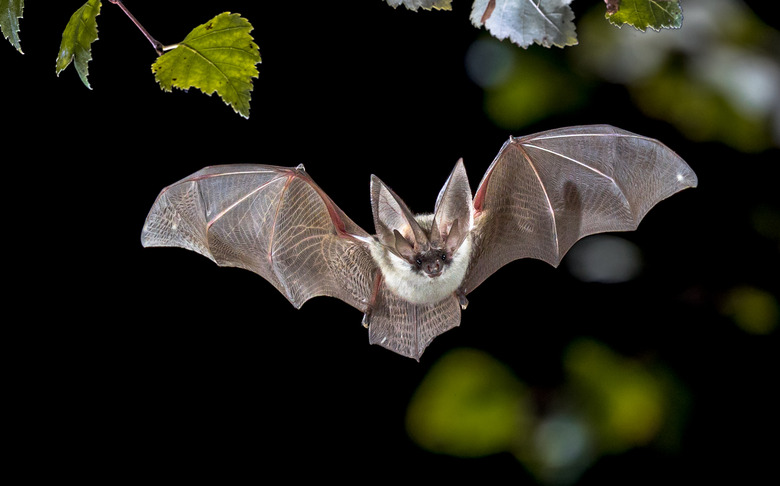Life Cycle Of Bats
There are over 1,100 species of bats, and they live all over the world. Bats are the only mammals capable of flight, and they are helpful to humans because they eat large quantities of insects, particularly mosquitoes. They also eat pollen and nectar and are responsible for pollination of many plants.
Gestation and Birth
Gestation and Birth
In temperate climates, bats typically give birth between May and July. In other climates, bats may give birth twice or more times per year. Depending on the species, gestation can take anywhere from six weeks to six months.
Bat Pups
Bat Pups
Most species give birth to just one pup, though sometimes twins are born. Newborn pups can weigh one-third as much as their mothers, and some species will reach full-size by two months.
Pup Activity
Pup Activity
Newborn pups are often left in the cave asleep while their mother forages for food. They will nurse for as little as five weeks in smaller species, and as long as five months in larger species. Most bats learn to fly and forage for food at three or four weeks old.
Pup Mortality
Pup Mortality
Baby bats typically die from accidents while flying or falls from high nesting places. Many bats do not live to maturity.
Predators and Dangers
Predators and Dangers
Once a bat has matured, its mortality rate is quite low. Because of their nesting locations and nocturnal habits, predators are rare. Disease or accidents may cause some deaths, but according to the Encyclopedia Britannica, bats can live up to 30 years.
References
Cite This Article
MLA
Armstrong, Catherine. "Life Cycle Of Bats" sciencing.com, https://www.sciencing.com/life-cycle-bats-5174304/. 22 November 2019.
APA
Armstrong, Catherine. (2019, November 22). Life Cycle Of Bats. sciencing.com. Retrieved from https://www.sciencing.com/life-cycle-bats-5174304/
Chicago
Armstrong, Catherine. Life Cycle Of Bats last modified March 24, 2022. https://www.sciencing.com/life-cycle-bats-5174304/
